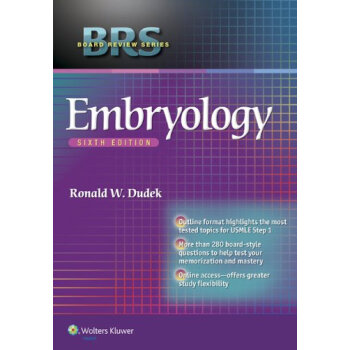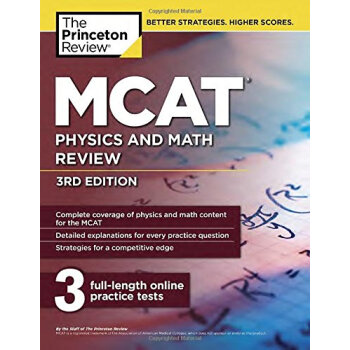![Frankenstein: A Cultural History [精装]](https://pic.tinynews.org/19223535/82c4d849-ff8a-4765-afc9-1483fb6827cd.jpg)

具体描述
内容简介
Frankenstein began as the nightmare of an unwed teenage mother in Geneva, Switzerland, in 1816. At a time when the moral universe was shifting and advances in scientific knowledge promised humans dominion over that which had been God's alone, Mary Shelley envisioned a story of human presumption and its misbegotten consequences. Two centuries later, that story is still constantly retold and reinterpreted, from Halloween cartoons to ominous allusions in the public debate, capturing and conveying meaning central to our consciousness today and our concerns for tomorrow. From Victorian musical theater to Boris Karloff with neck bolts, to invocations at the President's Council on Bioethics, the monster and his myth have inspired everyone from cultural critics to comic book addicts. This is a lively and eclectic cultural history, illuminated with dozens of pictures and illustrations, and told with skill and humor. Susan Tyler Hitchcock uses film, literature, history, science, and even punk music to help us understand the meaning of this monster made by man.作者简介
Susan Tyler Hitchcock’s last book was Mad Mary Lamb: Lunacy and Murder in Literary London. Married with two children, she lives near Charlottesville, Virginia.精彩书评
Louis Bayard As Susan Tyler Hitchcock's delightful cultural history reminds us, the monster that Mary fashioned from her slumbers is still alive and kicking: "in our bookstores, on our film and television screens, from morning cartoons to wee-hours rerun movies. He plays roles in advertising and political debate, he appears at public library story hours and on graduate-level reading lists. He is both a joke and a profound ethical dilemma." —The Washington Post Publishers Weekly Literary historian Hitchcock (Mad Mary Lamb: Lunacy and Murder in Literary London) leads readers on a guided tour of Frankensteinappearances in this colorful and consistently entertaining narrative. The history begins, appropriately, with the monster's unlikely creation by Mary Shelley as a result of a ghost story challenge (also taken up by John William Polidori, whose tale of a vampyre would later inspire Bram Stoker). Hitchcock then lays bare the publishing world of the 19th century, a veritable Wild West of unauthorized stage adaptations, parodies and continuations in which Frankensteinthrived. James Whale's Karloff classic gets its due, as do the disturbing and innovative 1910 Edison Company production and the 1952 live television broadcast starring a drunk Lon Chaney Jr. Running throughout the book is the parallel story of the invocation of Frankenstein in the public discourse as a metaphor for subjects ranging from the Crimean war to genetically modified organisms. While some Frankensteindilettantes might find the narrow focus of the book somewhat tedious, there are enough strange and delightful anecdotes to keep most readers engaged. B&w; illus. (Oct.) Copyright 2007 Reed Business Information Fewer Reviews Library Journal The word Frankensteinconjures images and ideas ranging from the horrific to the comic. This iconic creature has appeared in novels, plays, films, comic books, and even political cartoons. Hitchcock (Mad Mary Lamb: Lunacy and Murder in Literary London) explores the evolution of this classic character from a young unwed mother's nightmare to Hollywood icon to an embodiment of the fears inherent in the technological age. She begins with a detailed biographical analysis of Mary Shelley's 1818 novel and follows with a descriptive study of the various incarnations the tale and its principles (both creator and monster) have taken on over nearly 200 years of cultural development. While she particularly emphasizes Boris Karloff's interpretation of the creature in the 1931 Universal film, her exploration is not limited to pop culture imagery; she also explores how the tale has become shorthand for describing various sociopolitical positions in the public debate. In this way, Hitchcock reveals how the universal themes of the novel have been embedded into our modern consciousness. The analysis is scholarly but presented in an engaging style that will appeal to any adult audience. Recommended for all libraries. [See Prepub Alert, LJ6/1/07.] —Shedrick Pittman-Hassett Kirkus Reviews A thoroughly entertaining look at the iconic monster. How did the unwed, 18-year-old mother of a toddler come to invent this nightmare creature with neck bolts, flattop head and that power unibrow? Hitchcock (Mad Mary Lamb: Lunacy and Murder in Literary London, 2005, etc.) suggests that Mary Shelley, soul mate of poet Percy Bysshe Shelley, daughter of radical philosopher William Godwin and pioneering feminist Mary Wollstonecraft, had heard about ghoulish experiments with electricity on corpses of criminals, which momentarily seemed to twitch back to life. She may also have drawn inspiration from her own life-altering trauma in 1815-the year before she thought of Frankenstein's monster-when her first baby died after less then a month. Hitchcock fondly details how a novel prompted by a summer of reading ghost stories in Geneva has imbedded itself in popular culture. Frankenstein inspired hundreds of stage productions before the classic 1931 film and the not-so-classic '60s TV series The Munsters, Young Frankenstein and The Rocky Horror Picture Show. The author smoothly charts the monster's transformation from cosmic and creepy to comic and campy, alongside Shelley's slow evolution from overlooked to appreciated novelist. One memorable section details how Boris Karloff's daughter Sara successfully sued Universal Studios for licensing products with his likeness on them; Hitchcock slyly notes that the monster once again broke free from its creator. In addition to selling 50,000 copies a year in America alone, Frankenstein lives on as a reference point in public discussions of genetic engineering and cloning. But the author doesn't neglect one of the monster's most enduring non-academiclegacies: its ubiquity at Halloween. Cogent vivisection of a literary legend animated by the universal human fascination with the dark side. Agent: Jane Dystel/Dystel & Goderich Literary Management前言/序言
用户评价
这本书的资料搜集工作令人印象深刻,其详尽程度超出了我的预期。在很多地方,作者似乎穷尽了所有相关的原始文献、早期评论乃至鲜为人知的传教士笔记和民间传说。我注意到其中引用了大量一手资料,这些资料的挖掘和呈现,为整个文化史的论证提供了坚实的基石,避免了许多二手研究中常见的以讹传讹。这种对细节的执着,使得本书的权威性不言而喻。尤其是在追溯某些特定图像或概念在不同文化圈的传播路径时,那种步步为营、无可辩驳的考据链条,让人由衷佩服。它不仅仅是在讲述一个故事的文化史,更是在展示一种扎实、严谨的学术研究方法论。
评分从一个纯粹的文化消费者角度来看,这本书极大地丰富了我对这个经典故事的理解深度。在此之前,我可能更多地是将它视为一个恐怖传说或科幻原型,但通过这本书的梳理,我开始意识到其内核所蕴含的关于“创造者责任”、“异化”、“他者凝视”的永恒母题。它不再仅仅是关于科学怪物的怪诞故事,而是被提升到了对现代性焦虑的深刻反思层面。每次读完一个章节,我都会情不自禁地停下来,反思现实世界中那些相似的伦理困境和被社会边缘化群体的境遇。这种将经典文本置于社会历史洪流中进行再审视的方法,激发了我强烈的共鸣,让我对我们所处的时代有了更复杂、更具批判性的认识。
评分这本书的装帧设计简直是一次视觉盛宴。那种厚实的精装封面,摸上去就知道是用料扎实,纸张的质感也相当出色,带着一种沉甸甸的历史厚重感。内页的排版非常讲究,字体的选择和行距的拿捏都透露出编辑团队的用心,即便是大段的文字阅读起来也不会感到压迫。装帧上的一些细节处理,比如书脊的烫金工艺或者扉页的微小纹饰,都让人联想到经典文学作品应有的仪式感。我猜测,这本书的装帧设计本身就是一种文化的致敬,它不仅仅是内容的载体,更像是一件可以长久珍藏的艺术品。光是把它放在书架上,那种存在感就已经非常引人注目,散发出一种内敛而高雅的气质,让人忍不住想去触摸和翻阅,这对于一部严肃的文化史著作来说,无疑是加分项,体现了对阅读体验的尊重。
评分深入阅读之后,我发现作者在梳理其文化影响力的脉络时,展现出了惊人的跨学科洞察力。他似乎没有满足于仅仅停留在文学批评的层面,而是像一个细致的考古学家,挖掘出这个经典形象如何在不同的时代语境中被重新解读和挪用。从早期的哥特式恐怖美学,到启蒙运动后期对“科学僭越”的反思,再到后来的弗洛伊德式的心理分析,乃至更近代的生物伦理学辩论,作者都游刃有余地穿梭其中。这种广阔的视野使得本书的论述不再是线性的叙事,而更像是一张不断延展、相互交织的文化地图。读到一些关于它在不同国家和不同艺术媒介中变奏的章节时,我深感震撼,原来一个故事能够承载如此复杂的文化重量,这种深度的剖析非常引人入胜。
评分这本书的叙事节奏处理得非常巧妙,它避免了许多学术著作常见的枯燥和晦涩。虽然主题宏大,涉及历史、哲学和美学等多个领域,但作者总能找到一个引人入胜的切入点,使得复杂的概念被平易近人地呈现出来。我尤其欣赏作者在论述过程中展现出的那种平衡感——既保持了必要的学术严谨性,又通过生动的案例和恰到好处的引用,时刻抓住读者的注意力。有时候,我会发现自己沉浸在某个特定历史时期的文化氛围中,仿佛能亲眼目睹这些思想是如何渗透到社会肌理的。这种行云流水的叙述风格,让阅读变成了一种享受而非负担,即使是面对某些相对晦涩的理论部分,也能顺畅地跟上作者的思路,非常适合希望全面了解该主题的非专业读者。
相关图书
本站所有内容均为互联网搜索引擎提供的公开搜索信息,本站不存储任何数据与内容,任何内容与数据均与本站无关,如有需要请联系相关搜索引擎包括但不限于百度,google,bing,sogou 等
© 2025 book.tinynews.org All Rights Reserved. 静思书屋 版权所有

![Cracking the DAT (Dental Admission Test) 英文原版 [平装] pdf epub mobi 电子书 下载](https://pic.tinynews.org/19225467/5993a413Ndbee845f.jpg)
![The Stars: A New Way to See Them [精装] pdf epub mobi 电子书 下载](https://pic.tinynews.org/19236290/rBEIC0_6kmUIAAAAAACCTgJkHNAAADz4wBB6pcAAIJm265.jpg)
![Blueprints Clinical Cases in Surgery[Blueprints外科临床案例] [平装] pdf epub mobi 电子书 下载](https://pic.tinynews.org/19240595/rBEGDk-aQiUIAAAAAAAgqkudm2YAAARFQMAx0cAACDC728.jpg)
![Mainstream green: Sustainable Design by LPA [平装] pdf epub mobi 电子书 下载](https://pic.tinynews.org/19268901/rBEIC0_zsnsIAAAAAABWnlzY-cMAADqwQD_15oAAFa2675.jpg)
![The Complete Pompeii [平装] pdf epub mobi 电子书 下载](https://pic.tinynews.org/19281541/rBEQYFGDbeYIAAAAAACjqvz01ZoAAAPyAMJ4ZwAAKPC007.jpg)
![The Winner Effect: The Neuroscience of Success and Failure [精装] pdf epub mobi 电子书 下载](https://pic.tinynews.org/19282444/rBEhVVGvCegIAAAAAAFTtz2npEcAAAABAJX9MsAAVPP306.jpg)
![Made at Home: Cheese & Dairy [精装] pdf epub mobi 电子书 下载](https://pic.tinynews.org/19283111/rBEhWFHM3c4IAAAAAAIwS0aPacsAAAmjwPQzncAAjBj567.jpg)
![Matter: See It, Touch It, Taste It, Smell It [平装] [5岁及以上] pdf epub mobi 电子书 下载](https://pic.tinynews.org/19460534/rBEhWFKlniIIAAAAAAHURP64lyEAAGjHQHWUlAAAdRc122.jpg)
![Centered Leadership Leading with Purpose, Clarity, and Impact [平装] pdf epub mobi 电子书 下载](https://pic.tinynews.org/19478827/53bcc3b3N56f9e629.jpg)
![Event Design活动现场设计 [精装] pdf epub mobi 电子书 下载](https://pic.tinynews.org/19502372/541bfb10N1658a04b.jpg)

![My Antonia [精装] pdf epub mobi 电子书 下载](https://pic.tinynews.org/19504591/54698611Nd4e4fba8.jpg)
![The Stand [精装] pdf epub mobi 电子书 下载](https://pic.tinynews.org/19526995/5462b5a1Na7378b07.jpg)

![Adventures Of Alice Lascelles The [精装] pdf epub mobi 电子书 下载](https://pic.tinynews.org/19545946/55f7eef8Na1500729.jpg)
![Yves Saint Laurent + Halston: Fashioning The '70S [圣罗兰+ 候司顿:塑造70年代] pdf epub mobi 电子书 下载](https://pic.tinynews.org/19573900/56aae17bNd6a0f84d.jpg)
![Andy Warhol: The Complete Commissioned Magazine Work 1948-1987 [安迪·沃霍尔:杂志工作全集1948年年至19 87年] pdf epub mobi 电子书 下载](https://pic.tinynews.org/19574068/56aae185Nece65087.jpg)
![Multiple Exposures: Jewelry And Photography [多重曝光:珠宝和摄影] pdf epub mobi 电子书 下载](https://pic.tinynews.org/19574234/577479dbN6f12c33a.jpg)

![Dog Wants to Play [01--03] pdf epub mobi 电子书 下载](https://pic.tinynews.org/19615983/570799d3N243fa59a.jpg)